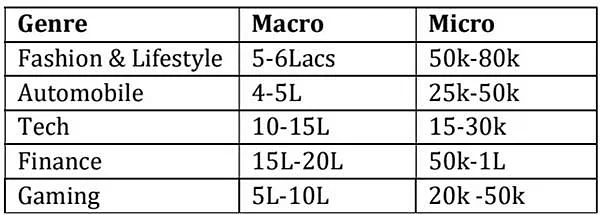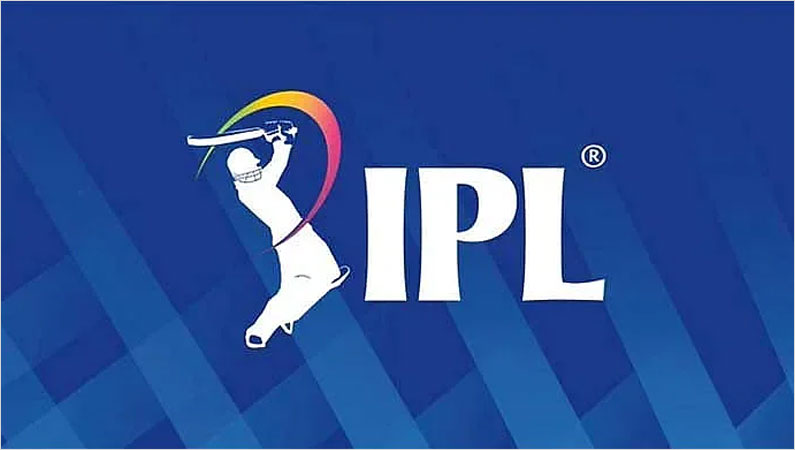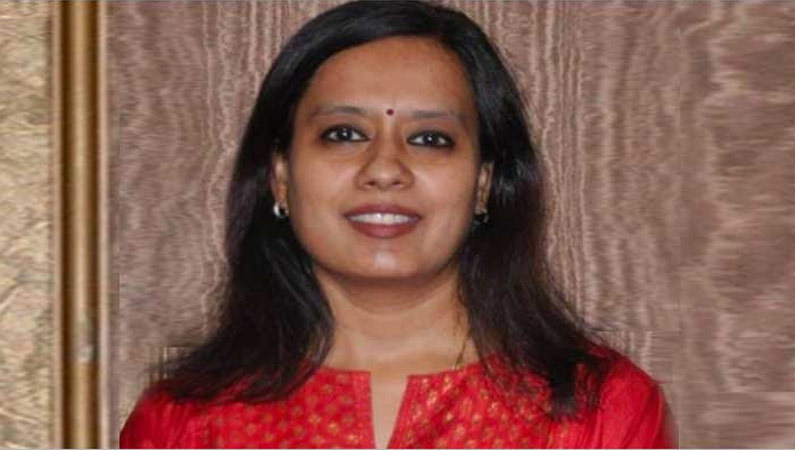Lack of standardization in the industry and practices like bidding need to be addressed for influencers across levels to get fair pay, believe experts Influencer marketing is one of the fastest-growing industries in India right now. As per the GroupM and INCA studies, the industry is poised to grow at a CAGR of 25% for the next decade, reaching a size of Rs 2200 crore in 2025. Further, ‘India Influence Report 2021’ by Zefmo indicated that influencer marketing witnessed a massive growth in spending by leading brands and agencies to the tune of over 40 per cent (year-on-year) growth. A huge chunk of this growing attention to influencer marketing is targeted at micro-influencers, who reportedly deliver a better ROI with better rates of engagement. As highlighted by the AnyTag report, micro-influencers in India hold maximum brand deals. It is despite 58.15% of influencers being macro-influencers.
 Is it fair to compare the pay of micro and macro-influencers
Reportedly, micro-influencers get 47% more engagement on their posts compared to macro-influencers, putting your brand in front of more interested shoppers and having a better connection with the audience who will trust them more, over celebrities or big influencers. Despite that, it is not fair to compare the remunerations of macro and micro-influencers, the industry feels.
IPLIX Media LLP Co-founder Neel Gogia says, “In my opinion, payments cannot be generalized, nor can they be the only factor determining a creator’s potential and talent. Having said that, in the current scenario, monetization varies from category to category, influencer to influencer. When it comes to macro-influencers and micro-influencers the difference is organically wider given the reach and networking with popular brands who also have a high appetite to spend. Imagine if an influencer with 30k followers, who has just started out, and an influencer with 5M followers, who has been in the space for years and is working with a team of 5, are paid the same amount. Doesn’t sound fair, right? This applies to every profession in the world whether it’s the corporate world or the creative. So, influencers charge according to the reach, engagement, ROI, and value-addition they offer to the brand, rather than the scale.”
He adds, “In fact, CPC (cost per engagement) of micro-influencers is sometimes higher than macro-influencers.”
en:lyft Founder and CEO Ajay Kudwa corroborated, “One thing here has to be taken into consideration that macro influencers have been in the industry for quite some time and the micro-influencers are yet budding content creators and have recently started creating content online. Other than the number of followers, the macro-influencers have clout in their field and the P2P influence is better with macro-influencers. The trust factor is also one thing that really makes a huge difference. Let’s say a macro-influencer talking about a Trading platform against a micro-influencer recommending a trading platform the audience will obviously trust the influencer who has been in the industry way longer than the micro-influencer.
The problem is deeper than that
While comparing the payments of macro and micro-influencers would not make sense on accounts mentioned above, the problem is much deeper than just that.
These standardised numbers are the best-case scenario as shared by one of the leading lifestyle influencers, “The industry is largely unregulated. There are no standardised pricing structures. And since most micro-influencers are just starting and do not usually have an agent representing them, they do not know the right worth of their work. They often end up getting 50-60% lesser than the standard rates in the industry. And it happens to the best of us when we are starting out.”
Another influencer marketing expert points out that while it might not make sense for macro and micro-influencers to get the same pay, it would be better if more & more brands start taking engagement and conversion metrics into the account rather than just followers' count. “Obviously most macro-influencers have been longer in the industry and have a large number of following, but engagement metrics keep dipping as one’s followers grow. While you are paying more for their experience, it is also important to pay just the amount for the targeted reach the micro-influencers are providing you. While some brands have actually started taking these factors into account, there is a need for more marketers to take this route for influencer engagement.”
He adds that in many cases macro-influencers end up getting much more because of bidding wars between representatives if more than one agency is representing them. “The lack of standardization in the industry and practices like bidding skew the pricing in favour of the powerful. This needs to be tackled for influencers across levels to get fair pay.”
What’s the way ahead
The industry agrees that brands have started looking beyond just the followers' count to collaborate with the influencers and this will eventually lead to an improvement in pay structures.
A Zefmo press release from earlier this month also noted, “In the continuing effort towards democratising the influencer universe, Zefmo onboarded a higher number of hyperlocal micro-influencers for its campaigns with the aim of making content more relatable with their followers. This segment saw over a 35 per cent jump in earnings for the micro-influencers.”
Kudwa concluded, “I am sure the time is not far away when most of the brands will prefer to work with micro-influencers. At the same time, I feel micro-influencers should follow their own passion and create content in their own unique ways. We have seen some micro-influencers creating good content but, unfortunately, they forgot their own way of creating content and started following in the footsteps of the macro-influencers hampering their own brand value.”
Is it fair to compare the pay of micro and macro-influencers
Reportedly, micro-influencers get 47% more engagement on their posts compared to macro-influencers, putting your brand in front of more interested shoppers and having a better connection with the audience who will trust them more, over celebrities or big influencers. Despite that, it is not fair to compare the remunerations of macro and micro-influencers, the industry feels.
IPLIX Media LLP Co-founder Neel Gogia says, “In my opinion, payments cannot be generalized, nor can they be the only factor determining a creator’s potential and talent. Having said that, in the current scenario, monetization varies from category to category, influencer to influencer. When it comes to macro-influencers and micro-influencers the difference is organically wider given the reach and networking with popular brands who also have a high appetite to spend. Imagine if an influencer with 30k followers, who has just started out, and an influencer with 5M followers, who has been in the space for years and is working with a team of 5, are paid the same amount. Doesn’t sound fair, right? This applies to every profession in the world whether it’s the corporate world or the creative. So, influencers charge according to the reach, engagement, ROI, and value-addition they offer to the brand, rather than the scale.”
He adds, “In fact, CPC (cost per engagement) of micro-influencers is sometimes higher than macro-influencers.”
en:lyft Founder and CEO Ajay Kudwa corroborated, “One thing here has to be taken into consideration that macro influencers have been in the industry for quite some time and the micro-influencers are yet budding content creators and have recently started creating content online. Other than the number of followers, the macro-influencers have clout in their field and the P2P influence is better with macro-influencers. The trust factor is also one thing that really makes a huge difference. Let’s say a macro-influencer talking about a Trading platform against a micro-influencer recommending a trading platform the audience will obviously trust the influencer who has been in the industry way longer than the micro-influencer.
The problem is deeper than that
While comparing the payments of macro and micro-influencers would not make sense on accounts mentioned above, the problem is much deeper than just that.
These standardised numbers are the best-case scenario as shared by one of the leading lifestyle influencers, “The industry is largely unregulated. There are no standardised pricing structures. And since most micro-influencers are just starting and do not usually have an agent representing them, they do not know the right worth of their work. They often end up getting 50-60% lesser than the standard rates in the industry. And it happens to the best of us when we are starting out.”
Another influencer marketing expert points out that while it might not make sense for macro and micro-influencers to get the same pay, it would be better if more & more brands start taking engagement and conversion metrics into the account rather than just followers' count. “Obviously most macro-influencers have been longer in the industry and have a large number of following, but engagement metrics keep dipping as one’s followers grow. While you are paying more for their experience, it is also important to pay just the amount for the targeted reach the micro-influencers are providing you. While some brands have actually started taking these factors into account, there is a need for more marketers to take this route for influencer engagement.”
He adds that in many cases macro-influencers end up getting much more because of bidding wars between representatives if more than one agency is representing them. “The lack of standardization in the industry and practices like bidding skew the pricing in favour of the powerful. This needs to be tackled for influencers across levels to get fair pay.”
What’s the way ahead
The industry agrees that brands have started looking beyond just the followers' count to collaborate with the influencers and this will eventually lead to an improvement in pay structures.
A Zefmo press release from earlier this month also noted, “In the continuing effort towards democratising the influencer universe, Zefmo onboarded a higher number of hyperlocal micro-influencers for its campaigns with the aim of making content more relatable with their followers. This segment saw over a 35 per cent jump in earnings for the micro-influencers.”
Kudwa concluded, “I am sure the time is not far away when most of the brands will prefer to work with micro-influencers. At the same time, I feel micro-influencers should follow their own passion and create content in their own unique ways. We have seen some micro-influencers creating good content but, unfortunately, they forgot their own way of creating content and started following in the footsteps of the macro-influencers hampering their own brand value.”










